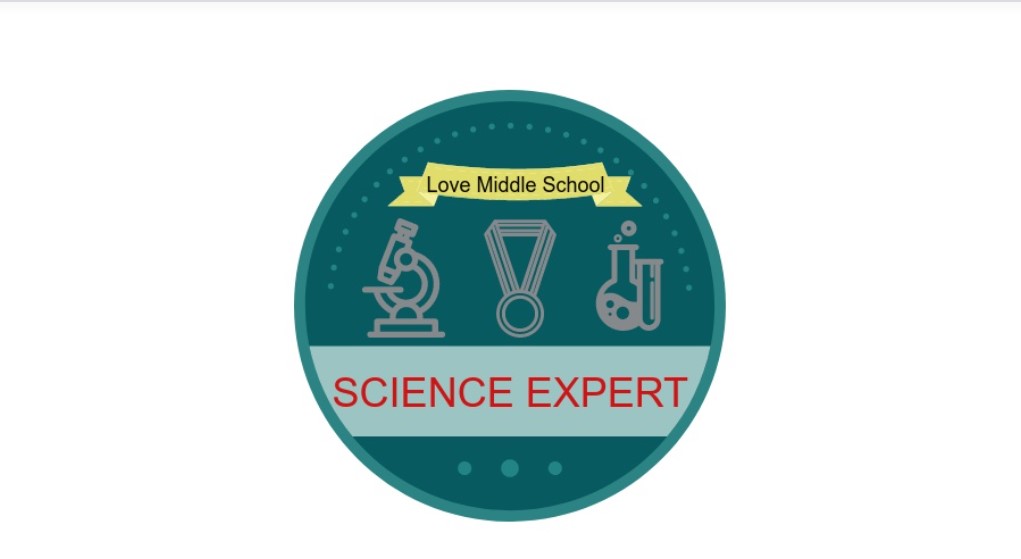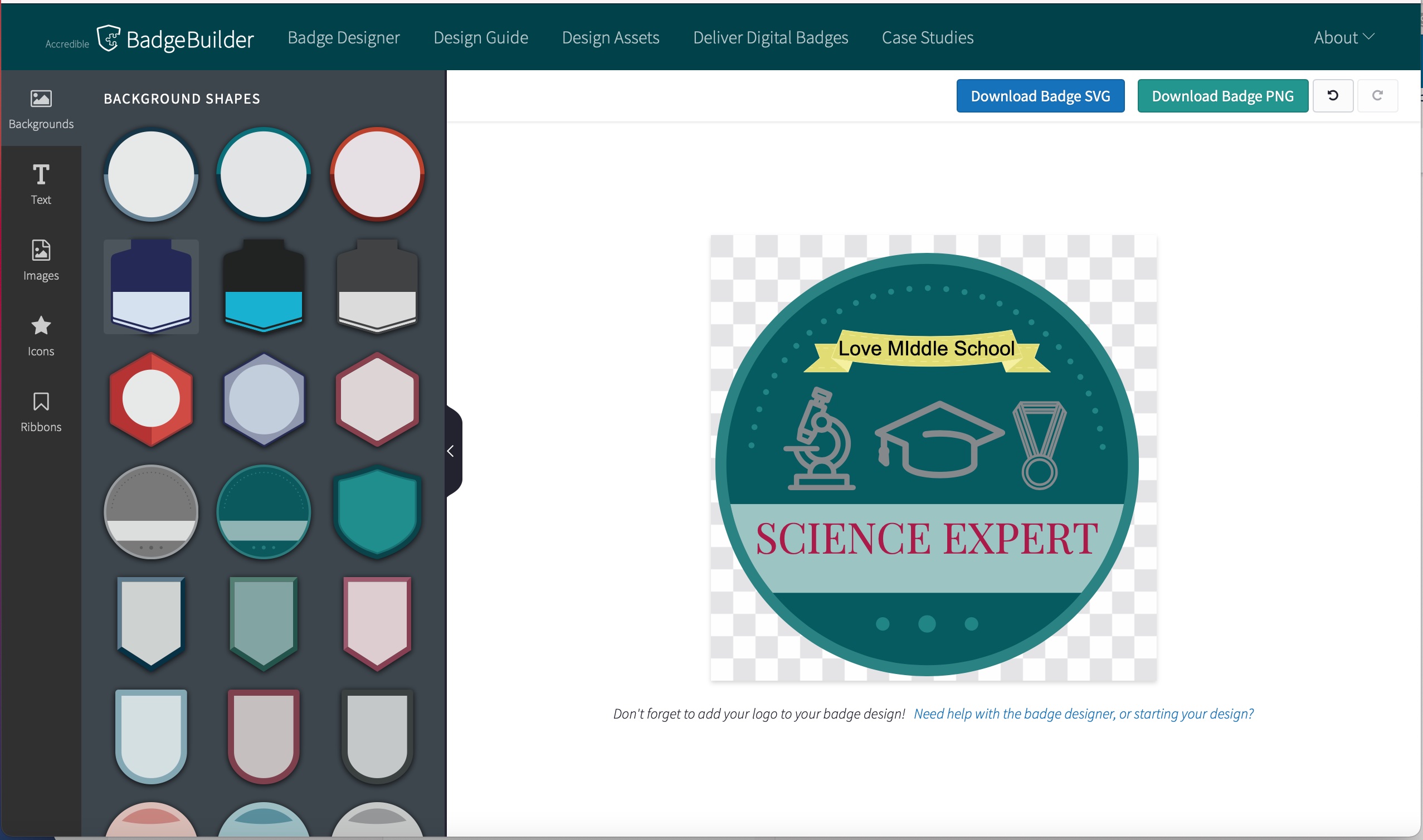Motivating Students with Digital Badges
Using digital badges to reward and engage students

Girl and boy scouts are motivated by badges, why not school students?
So what is a digital badge, and how can it be used to motivate a student and engage them in learning experiences? Also, what are the simple steps required to create digital badges, and how do you connect these to learning activities?
What Are Digital Badges?
Digital badges are digital credentials that are ubiquitously recognized to represent the mastery of specific competencies, skills, programs, etc. Badges can be based on individual skill sets, or a combination of skills.
How Can I Motivate Students with Digital Badges?
There are many uses for badges within teaching and learning. Of the uses of digital badges, motivating students is an excellent option.
Many times, students do not see the value of what they are learning as the concepts can be too abstract or not directly connected to their current worldview and lived experiences. For example, while understanding how to calculate percentages as a child may seem pointless, it comes in as a useful skill as an adult when calculating sales prices when shopping and balancing personal finances and spending. Unfortunately, it may be difficult to convince students of the importance of learning something for the future.
The good news is that knowing of the potential to earn a digital badge, or a series of badges at the end of the learning experience, can be very motivating. Not only will students have the digital badge to share with their family, they will also have a credential that can be added to a portfolio, which can be used when applying to colleges or even their resumes for employment.
Turn earning digital badges into a friendly competition. This could be a monthly, quarterly, or yearly competition, or based on certain units. Similar to gaming in which students earn points or access to higher levels of the games based on their play, earning digital badges can offer similar motivation.
Tech & Learning Newsletter
Tools and ideas to transform education. Sign up below.
What Are Examples of Connecting Digital Badges to Learning Activities and Assignments?
Connecting the earning of digital badges to multiple competency areas is a great way to motivate students to engage in learning activities, beyond just a one-off experience.
For example, in science, there are many different content areas. You could create a science digital badge that students can earn after successfully completing four science lessons:
1. Environmental Science Lesson Using Wakelet - Competencies for students to master toward earning a science digital badge includes being able to:
- Locate online content related to course-learning goals
- Digitally storing content in a robust online repository
- Storing shared content and resources within an online repository
2. Anatomy and Physiology Using Google Jamboard - Competencies for students to master toward earning a science digital badge includes being able to:
- Identify major human body parts
- Describe the functions of different human body organs
3. Weather Lesson Using WeVideo - Competencies for students to master toward earning a science digital badge includes being able to:
- Define meteorological vocabulary words
- Analyze weather patterns
- Accurately report weather forecasting hypotheses
4. Biodiversity Using Canva - Competencies for students to master toward earning a science digital badge includes being able to:
- Describe the components of biodiversity, including ecosystem, genetic, and species
- Create a multimedia presentation that demonstrates a robust understanding of the types of biodiversity
How Do I Create Badges?
Many different options are available for creating badges. One free option is Accredible Badge Builder.
What is nice about Accredible is the ability to import images to be used for the badge icon. You can design the badge as you see fit, changing the color, text size, and style.
The steps to create a badge are very simple:

- Go to Accredible Badge Builder.
- Click “Badge Designer” in the upper left-hand corner.
- Choose the background shape that will be the overall shape of your badge. Dozens of options are available from which to choose.
- Click “Text” to add text to the badge. This would be the name of the badge, for example “Science Expert.”
- Click “Images” to upload any background images.
- Click “Icons” to add graphics that associate with the badge.
- Click “Ribbons” to add ribbons to the badge.
- Download your badge as either a SVG or PNG file.
You can skip any of the steps 5-7 if you do not want to include any images, icons, and/or ribbons. Email the digital badges to students and let them share with their families. They can also be included in their portfolios, and badges also can be printed and put in a frame!
As you try new things to engage your students in the learning process this school year, try using digital badges. You may be surprised with how it motivates and engages them.
Dr. Stephanie Smith Budhai is faculty member in the College of Education and Human Development at the University of Delaware, focusing on Educational Technology, Learning Design, and Justice-centered Pedagogies. She holds two national education technology leadership positions on the Information Technology Council and as Chair of the Culture and Climate Committee for the Society for Information Technology and Teacher Education (SITE). She holds a Ph.D. in Learning Technologies, and a M.S. in Information with a specialization in Library and Information Science, and K-12 teaching certifications in Technology Education, Instructional Technology and Business, Computers, Information Technology, Special Education and Elementary Education. Dr. Smith Budhai is the 2021 SITE Emerging Leader and the 2017 ISTE Awardee for Excellence in Teacher Education. She is also a Nearpod, and VoiceThread Certified Educator. Dr. Smith Budhai has more than a decade of online teaching experience, and has published myriad books (two have been translated into Arabic), articles, and invited editorials surrounding the use of technology and online learning in education. A few of her book publications include:
- Leveraging Digital Tools to Assess Student Learning
- Increasing Engagement in Online Learning: Quick Reference Guide
- Teaching the 4Cs with Technology
- Best Practices in Engaging Online Learners through Active and Experiential Learning Strategies
- Nurturing Young Innovators: Cultivating Creativity in the Classroom, Home and Community
